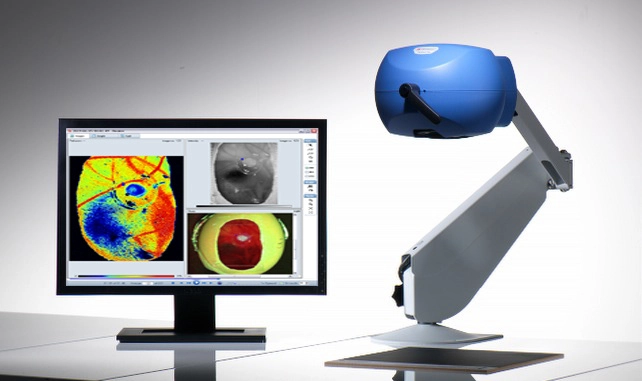In the realm of nonlinear optics, the phenomenon of self-parametric oscillation in nonlinear crystals has emerged as a captivating area of study. This article delves into the intricate world of self-parametric oscillation, shedding light on how nonlinear crystals give rise to new frequency components through this remarkable process. Additionally, we will delve into the practical applications of self-parametric oscillation lasers, including their role in generating frequency combs and enabling precise spectral measurements. As we embark on this journey, you will gain a profound understanding of this cutting-edge technology.
Unveiling the Phenomenon
Self-Parametric Oscillation Defined
At the heart of modern optics lies the phenomenon of self-parametric oscillation. This process allows for the transformation and broadening of light spectra in ways that traditional linear optics cannot achieve. Nonlinear crystals, when exposed to specific intense light frequencies, can spontaneously give rise to new light frequencies, in essence “multiplying” the light that passes through them. Think of it as a piano where, when certain keys are struck, neighboring keys sound off without being touched. This ability to generate new frequencies without an external nudge or “pump” is the magic of self-parametric oscillation.

The significance of this phenomenon can’t be understated. Imagine the implications for communication technologies. By broadening the spectrum of frequencies, we can potentially transmit more data over the same medium, leading to faster internet speeds and more robust communication channels. Additionally, it has promising applications in advanced spectroscopy, allowing scientists to probe materials and molecules with a wider range of light frequencies than before.
Nonlinear Crystal Characteristics
But what’s behind this magic? The answer lies in the unique nature of nonlinear crystals. Unlike regular crystals that respond linearly to incoming light, nonlinear crystals have an asymmetrical response. When light, especially of high intensity, shines upon these crystals, it interacts with the crystal lattice in ways that give rise to additional light frequencies.
Two of the most common processes that showcase these nonlinear interactions are second-harmonic generation (SHG) and sum-frequency generation (SFG). In SHG, a nonlinear crystal can combine photons of a particular frequency and produce new photons with double that frequency. Imagine two musical notes combining to produce a note that’s twice as high-pitched. Meanwhile, SFG involves the combination of photons of different frequencies to produce new photons with a frequency that is the sum of the two.
The choice of crystal is pivotal. Depending on their structure and composition, different nonlinear crystals are suited to different frequencies and types of light. Researchers spend considerable time and effort selecting and designing the perfect crystal for the desired optical outcome.
In essence, the world of nonlinear optics, with phenomena like self-parametric oscillation at its forefront, promises to redefine how we harness and manipulate light in the future. As we continue to probe and understand these interactions better, who knows what other wonders await discovery?
The Magic of Self-Parametric Oscillation
Nonlinear Mixing of Frequencies
The realm of optics has always held wonders, but few are as captivating as the phenomenon of self-parametric oscillation. At its core, it revolves around the intriguing principle of nonlinear mixing. To understand this, imagine light not as a mere beam but as a symphony of frequencies.

As this symphony traverses through a nonlinear medium, some of its notes, or frequencies, start interacting, mixing, and resonating in complex ways. This isn’t just a simple linear superposition; it’s a more intricate dance. Frequencies combine, split, and even generate completely new ones. For instance, two photons with distinct frequencies might interact to produce third and fourth frequencies, different from the originals.
The process might sound serendipitous, but it’s governed by the laws of physics, particularly energy and momentum conservation. As high-intensity light, often in the form of a laser pulse, travels through the nonlinear crystal, its different frequency components undergo numerous interactions.
These interactions, which are deeply rooted in the intrinsic properties of the crystal and the nature of the input light, lead to a cascading generation of new frequency components. This dynamic and intricate interaction, which continually evolves, is the heart of self-parametric oscillation.
Broadening of Spectral Bandwidth
From a practical perspective, one of the most awe-inspiring consequences of these nonlinear interactions is the drastic expansion of the spectral bandwidth. Consider an initial light source that emits a confined range of frequencies. Once subjected to the nonlinear processes within the crystal, this confined range undergoes a metamorphosis. What emerges on the other side is a spectrum that’s much broader, richer, and teeming with new frequencies.
This broadened spectrum holds immense value. In telecommunications, for instance, a broader bandwidth translates to higher data transfer rates. In the world of spectroscopy, it offers researchers a more extensive palette of frequencies to work with, making it possible to study and interact with a broader range of materials. Even in medical imaging, this broadened spectrum can provide more detailed and nuanced images.

The amplification of the spectral bandwidth through self-parametric oscillation is akin to transforming a solo performance into a grand orchestra. With more frequencies at play, the possibilities and applications multiply, opening doors to innovations and discoveries across diverse fields.
Applications in Cutting-Edge Technology
Frequency Combs: Precision in Wavelengths
Diving deeper into the world of optics, one cannot overlook the marvel that is the optical frequency comb. Evoking images of a hair comb, this tool, instead of teeth, has equally spaced, sharp spectral lines. These lines, or ‘teeth’, are the manifestation of precision. Every spectral line corresponds to a particular frequency, and their uniform spacing makes them ideal for various applications. Born from the marriage of self-parametric oscillation lasers and certain controlled conditions, these combs represent an orchestra of wavelengths playing in perfect harmony.
Optical frequency combs are more than just an optical phenomenon; they are a tool of unmatched precision. They play a pivotal role in time and frequency metrology. Consider the atomic clock, which utilizes the consistent frequencies from a frequency comb to measure time with unparalleled accuracy. Beyond timekeeping, they are instrumental in refining the measurements of fundamental constants, the constants that govern the very framework of our universe.
Spectral Measurements: Unveiling Hidden Details
As scientists and researchers push the boundaries of knowledge, the tools they use need to match their ambition. In the realm of spectroscopy, where understanding materials down to their atomic or molecular levels is crucial, precision is everything. Self-parametric oscillation lasers, with their unique light-manipulating capabilities, have become the torchbearers of this precision.

Imagine trying to decipher a coded message where every slight shade of color holds meaning. In traditional spectroscopy, some of these subtle color shades might be missed. However, lasers powered by self-parametric oscillation can highlight these colors, revealing secrets that were previously hidden. From identifying new elements in distant stars to diagnosing diseases based on chemical markers, the applications are vast and transformative.
Quantum Technologies: The Future Awaits
As we venture into the dawn of the quantum age, the tools from the optical world, especially self-parametric oscillation lasers, are right at the forefront. Quantum mechanics, with its counterintuitive and wondrous principles, promises to revolutionize our technological landscape.

For quantum technologies to move from theoretical models to tangible tools, precision and control are vital. Herein lies the potential of self-parametric oscillation lasers. Their ability to generate and manipulate specific quantum states of light could be the key to reliable quantum communication channels, unhackable quantum cryptography systems, and supercomputers that can outperform any classical computer. As researchers worldwide grapple with the challenges of making quantum technologies practical and accessible, lasers with their spectral precision might just be the guiding light they need.
Conclusion
In conclusion, self-parametric oscillation of nonlinear crystals is a captivating phenomenon that holds immense potential in a wide array of applications. From the generation of precise frequency combs to unraveling the intricacies of spectral measurements, this technology is shaping the future of optics and photonics. As we continue to delve deeper into the nonlinear properties of crystals and refine our understanding of self-parametric oscillation, we can anticipate even more groundbreaking applications on the horizon.
Frequently Asked Questions (FAQs)
- What is self-parametric oscillation in nonlinear crystals?
- Self-parametric oscillation is an optical phenomenon in which nonlinear crystals generate new frequency components within themselves without the need for external optical pumping.
- How do nonlinear crystals achieve self-parametric oscillation?
- Nonlinear crystals achieve self-parametric oscillation through nonlinear mixing of different frequency components of the input light, leading to the generation of new frequencies.
- What are the practical applications of self-parametric oscillation lasers?
- Self-parametric oscillation lasers are used in applications such as generating optical frequency combs for precision wavelength measurements, spectral measurements in spectroscopy, and emerging quantum technologies.
- How does self-parametric oscillation benefit spectral measurements?
- Self-parametric oscillation lasers enable precise spectral measurements, allowing researchers to identify subtle features, absorption lines, and other spectral details in materials, which is crucial for various scientific and industrial applications.
- What role does self-parametric oscillation play in quantum technologies?
- Self-parametric oscillation lasers are expected to contribute significantly to the advancement of quantum technologies, including quantum cryptography, quantum computing, and quantum communication, by generating specific quantum states of light.

Frank
Frank graduated from the University of Shanghai for Science and Technology, majoring in optics. As a technical engineer at Crylink Company, he deeply understands crystal materials and laser components.
Related Video(s) with this Article
Related Product(s) with this Article
Related Application(s) with this Article
